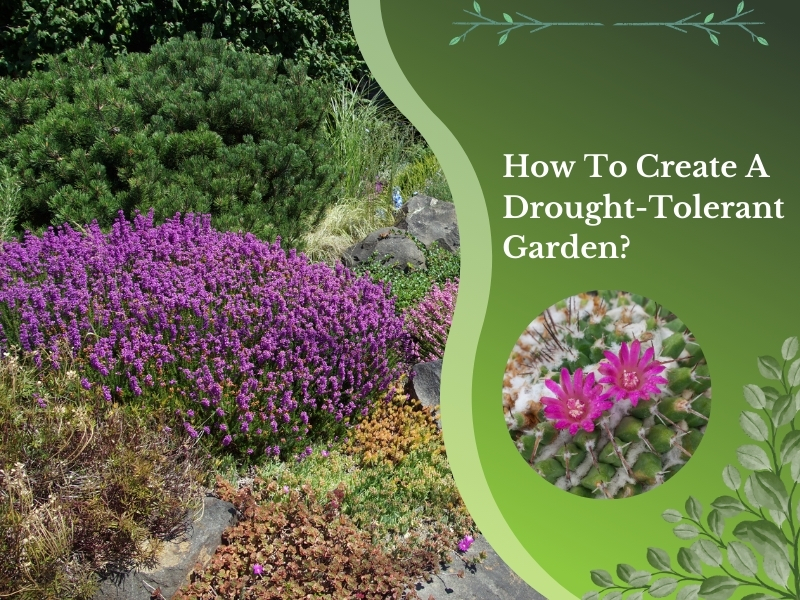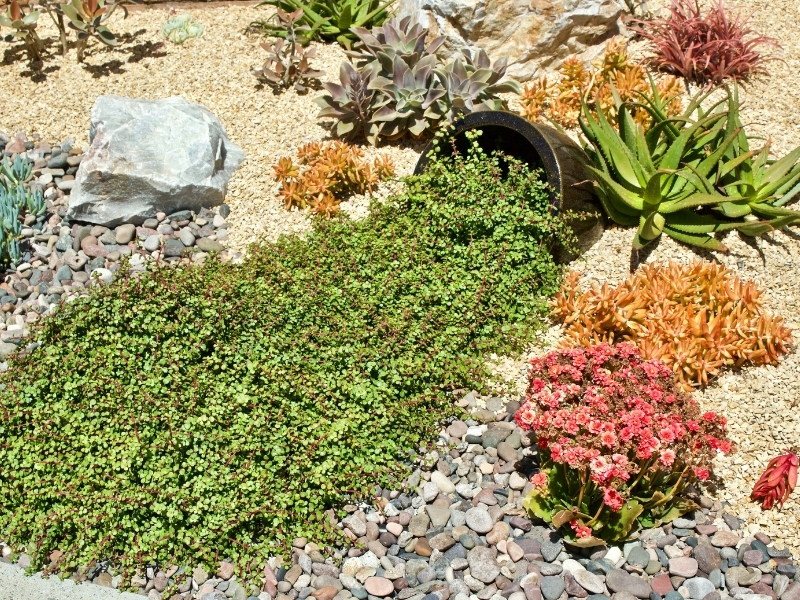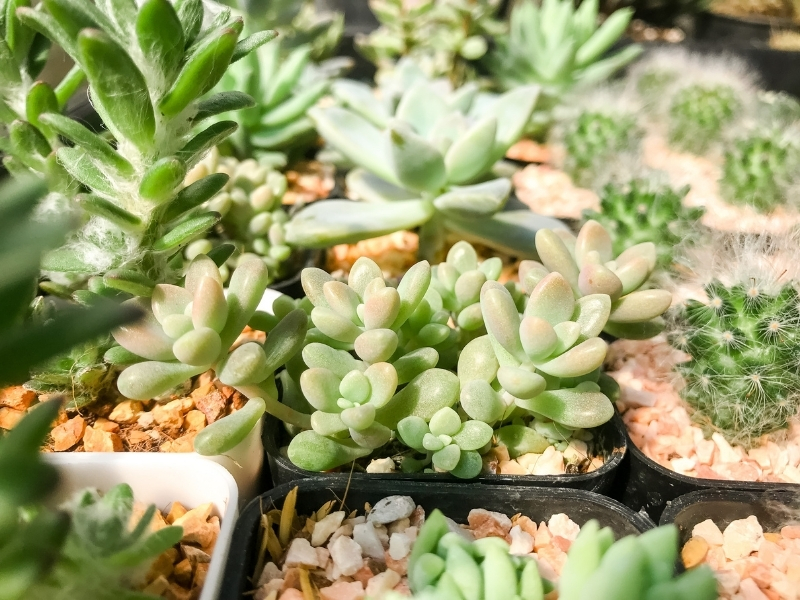
Creating a drought-tolerant garden is an innovative and sustainable way to ensure your outdoor space remains lush and healthy even during Sydney’s dry spells. With the city’s subtropical climate, choosing the right plants, watering methods, and soil care is essential to conserve water while maintaining a vibrant garden. Whether you’re a homeowner or a business in Sydney, implementing these strategies will help you create a beautiful and water-efficient garden.
What is a drought-tolerant garden, and why is it important?
A drought-tolerant garden is designed to thrive with minimal water. Choosing the right plants and adopting water-efficient practices can reduce the need for regular irrigation and save water. This is particularly important in Sydney, where summers can be hot and dry, often leading to water restrictions. Focusing on plants naturally adapted to dry conditions helps conserve water, reduce environmental impact, and create a more sustainable outdoor space.
How do you choose the right plants for a drought-tolerant garden?
Selecting the right plants is the first step in creating a drought-tolerant garden. Here are some factors to consider:
- Native plants: Native plants are well-suited to Sydney’s climate. They are drought-resistant and support local wildlife.
- Succulents: These drought-tolerant succulent plants store water in their leaves, making them perfect for dry conditions.
- Heat-loving plants: Varieties like kangaroo paws, bottlebrushes, and lavender thrive in the heat and need less water.
- Grasses and ground cover: Drought-tolerant options like sedges and creeping thyme retain moisture and reduce evaporation.
- Perennials: Choose hardy perennials that survive multiple seasons with minimal care.
What Are the best watering techniques for a drought-tolerant garden?
While drought-tolerant plants can survive with less water, proper watering techniques are crucial to help them thrive. Here are some effective methods:
- Drip irrigation: Directs water to the roots, reducing waste.
- Deep watering: Encourages profound root growth with less frequent watering.
- Morning or evening watering: Minimises evaporation.
- Rain barrels: Collect rainwater to reduce tap water use.
- Soaker hoses: Allow water to seep slowly into the soil.

How can you improve your garden’s soil for drought resistance?
Soil quality is vital for moisture retention. Improving it helps plants survive dry spells and reduces watering needs. Here’s how to enhance your garden’s soil:
- Add organic matter: Compost and mulch improve soil structure and water retention.
- Use clay soil: Clay holds moisture better than sandy soil.
- Aerate: Loosen the soil to help water reach the roots.
- Add mulch: Prevents evaporation and keeps soil cool.
- Use amendments: Water crystals help retain moisture longer.
Why Is mulching essential for a drought-tolerant garden?
Mulching is a crucial technique for conserving water in your garden. Here’s why it’s so beneficial:
- Water retention: Mulch helps retain moisture by preventing it from evaporating, keeping the soil hydrated for longer.
- Temperature regulation: It helps keep the soil cool during hot weather, protecting plant roots from heat stress.
- Weed control: Mulch reduces the growth of weeds that compete for water.
- Soil enrichment: As mulch decomposes, it adds valuable nutrients to the soil, improving health.
What types of ground covers work well in a drought-tolerant garden?
Ground covers reduce evaporation, suppress weeds, and enhance your garden’s appearance. Here are some tremendous drought-tolerant options to consider:
- Creeping thyme: A low-maintenance, fragrant option that thrives in dry conditions.
- Blue star creeper: A hardy ground cover that adds a splash of colour and handles dry spells well.
- Sedum: Its succulent leaves are ideal for dry areas with little water.
- Kangaroo paw: This native Australian plant tolerates dry conditions and looks striking in your garden.
- Buffalo grass is drought-resistant and low-maintenance, making it an excellent ground cover.

How do you maintain a drought-tolerant garden through Sydney’s changing seasons?
Sydney’s climate requires seasonal care adjustments for a drought-tolerant garden:
- Summer: Ensure plants are established; water deeply in the morning or evening.
- Autumn: Reduce watering but monitor dry periods.
- Winter: Water minimally; focus on pruning.
- Spring: Use rainfall to reduce watering needs.
What are the best practices for sustainable irrigation in a drought-tolerant garden?
Sustainable irrigation is all about using water wisely. Here are some practices that can help:
- Intelligent irrigation systems adjust watering based on weather conditions, ensuring water is only used when needed.
- Rainwater harvesting: Collecting rainwater to irrigate your garden will significantly reduce water usage, which is especially helpful during dry spells.
- Watering zones: Divide your garden by water needs for efficient watering.
- Water-saving tools: Use timers or efficient sprinklers to reduce waste.
How can professional landscaping services enhance your water-efficient garden?
Professional landscaping services can make creating and maintaining a drought-tolerant garden easier. Here’s how experts can help:
- Expert design: Professionals can design a layout that maximises water efficiency and select the best plants for your garden.
- Soil and irrigation solutions: They can assess your soil and install irrigation systems tailored to your garden’s needs.
- Ongoing maintenance: Professional landscapers can offer regular maintenance to ensure your garden remains drought-resistant and healthy.
- Seasonal adjustments: Landscapers know the best practices for each season and can adjust care routines to suit Sydney’s changing climate.
What are the benefits of a water-efficient garden for your property and the environment?
A drought-tolerant garden offers several benefits:
- Water conservation: Reducing water use benefits your garden and the environment, especially during droughts.
- Lower maintenance costs: Drought-resistant plants require less care, saving time and money.
- Environmental impact: These gardens support local ecosystems by using native plants and reducing reliance on water resources.
- Increased property value: A well-maintained drought-tolerant garden can increase your property’s appeal and value.
Building a sustainable, drought-tolerant garden
Creating a drought-tolerant garden is an innovative, eco-friendly way to adapt to Sydney’s climate while conserving water. A drought-tolerant garden design allows you to make a garden that flourishes with minimal maintenance by choosing the right plants, employing effective watering methods, improving soil quality, and using sustainable irrigation. The benefits are clear: reduced water usage, lower maintenance costs, and a positive environmental impact. Whether you’re a homeowner or a business, a drought-tolerant garden adds value to your property and helps preserve local ecosystems.
Our commitment to excellence sets All Green Gardening & Landscaping apart from other Sydney landscaping companies. With an award-winning track record and expertise in creating stunning garden designs, we carefully handle every project. Our team uses only the best materials and techniques to ensure lasting beauty. Plus, we understand budgets matter, so we offer a range of services and work with you to find a solution that fits your financial goals. Contact All Green Gardening & Landscaping today for a free consultation, expert advice and services!
